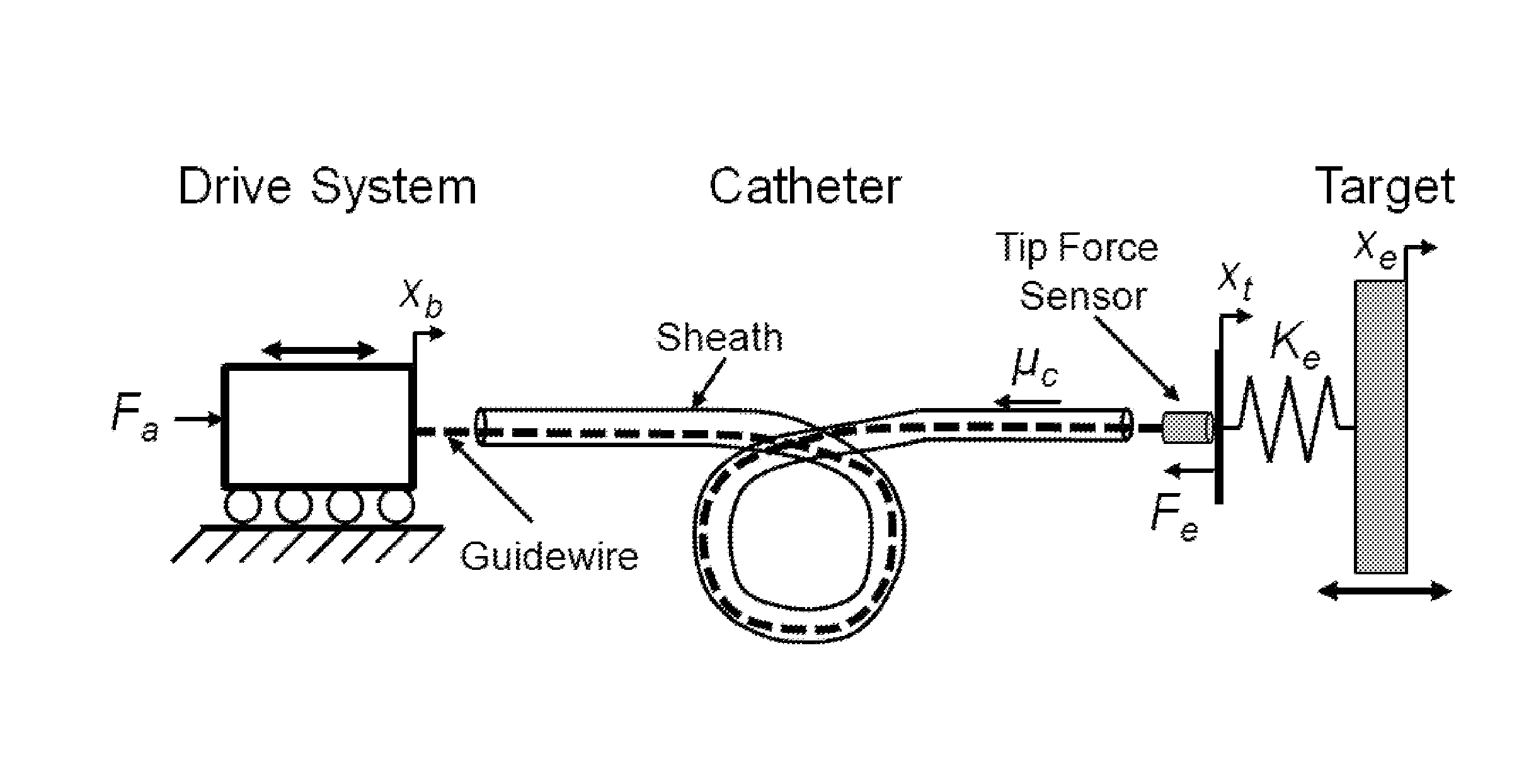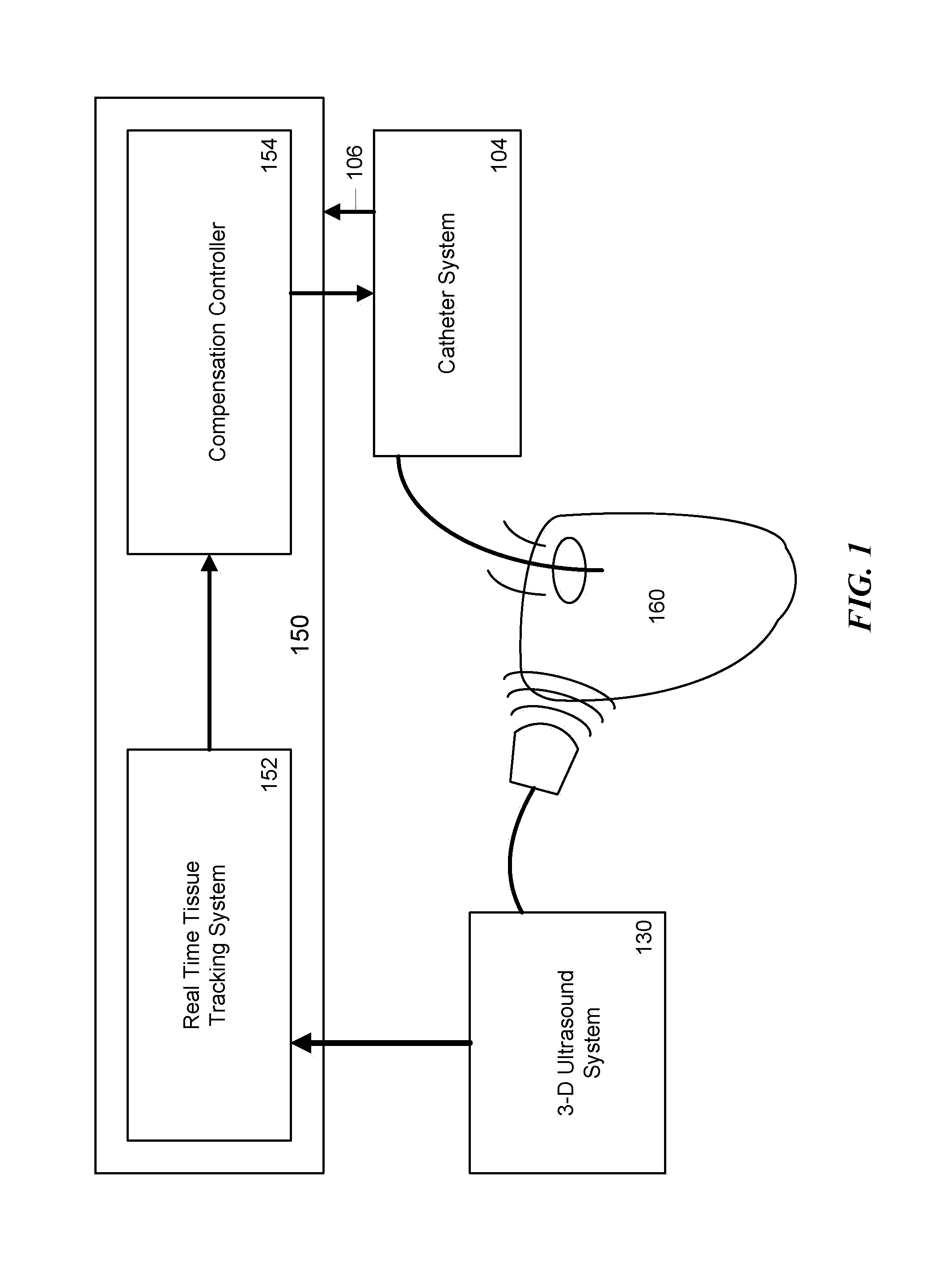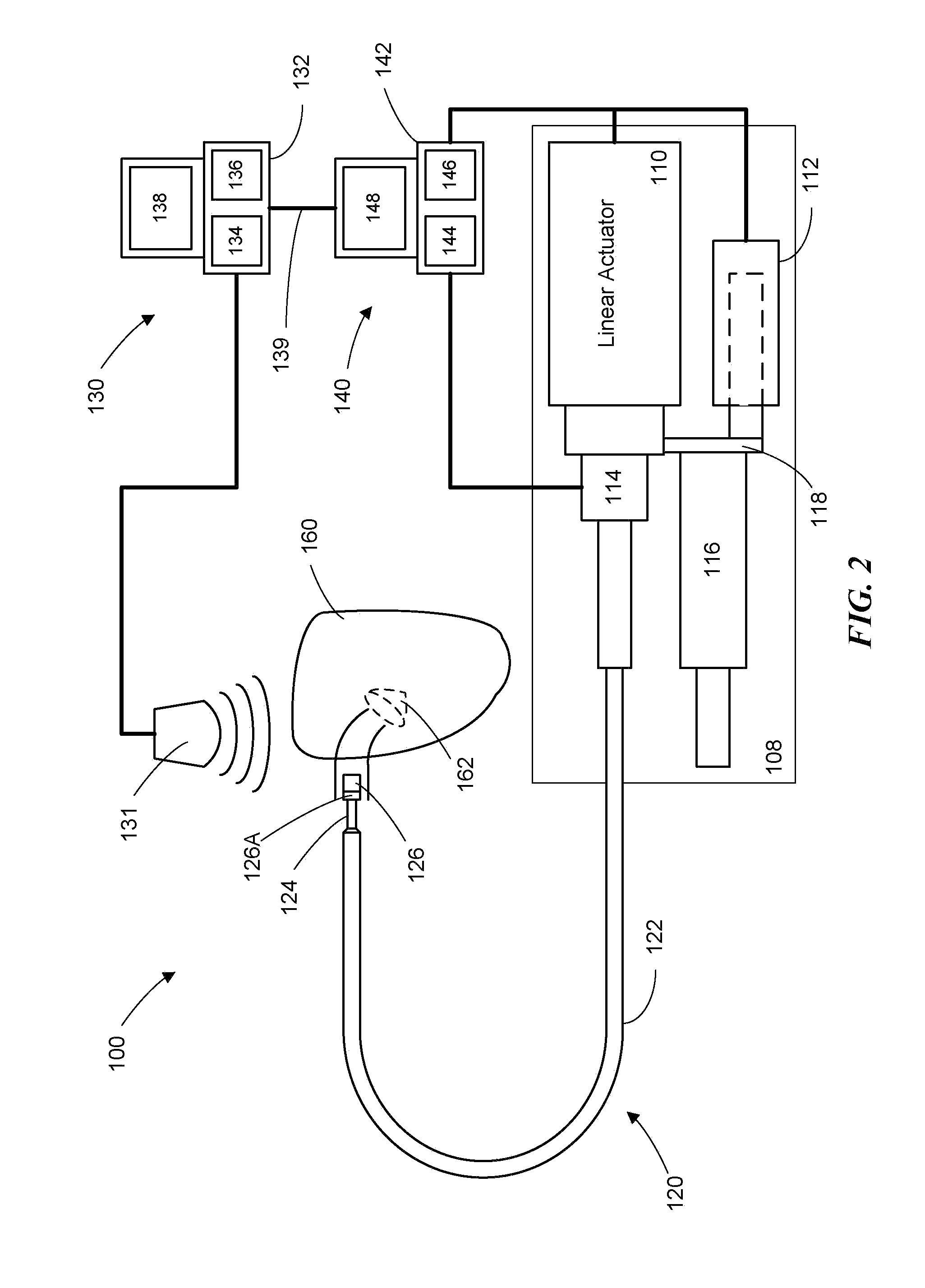Motion compensating catheter device
a catheter device and motion compensation technology, applied in the field of catheter devices, can solve the problems of not providing sufficient speed to compensate for the motion of the beating heart, the current catheter technology does not allow clinicians to interact with the beating heart tissue, and the traditional surgical procedure is very invasive, so as to improve the accuracy of the tip position and improve the accuracy of the tip for
- Summary
- Abstract
- Description
- Claims
- Application Information
AI Technical Summary
Benefits of technology
Problems solved by technology
Method used
Image
Examples
Embodiment Construction
[0044]This present invention is directed to a catheter system that employs motion compensation techniques and optionally, other corrections, in order to minimize invasiveness in surgical procedures involving moving target areas, tissue and organs, such as a beating heart. In accordance with one embodiment of the invention, the system includes an actuator at the base of the catheter system that can drive a catheter guide-wire inside the flexible catheter sheath. For example, the sheath can be manually or automatically manually advanced through the vasculature into the heart. A standard 3-D ultrasound (3DUS) probe can be used to produce images of the catheter tip and the tissue target, and real-time image processing algorithms can be used to track the catheter-tissue relationship and control the motion of the catheter guide-wire tip. The guide-wire tip can be translated in and out of the sheath in correspondence with the cardiac motion to perform repairs. A control system can be used ...
PUM
| Property | Measurement | Unit |
|---|---|---|
| acceleration | aaaaa | aaaaa |
| speeds | aaaaa | aaaaa |
| width | aaaaa | aaaaa |
Abstract
Description
Claims
Application Information
 Login to View More
Login to View More - R&D
- Intellectual Property
- Life Sciences
- Materials
- Tech Scout
- Unparalleled Data Quality
- Higher Quality Content
- 60% Fewer Hallucinations
Browse by: Latest US Patents, China's latest patents, Technical Efficacy Thesaurus, Application Domain, Technology Topic, Popular Technical Reports.
© 2025 PatSnap. All rights reserved.Legal|Privacy policy|Modern Slavery Act Transparency Statement|Sitemap|About US| Contact US: help@patsnap.com



